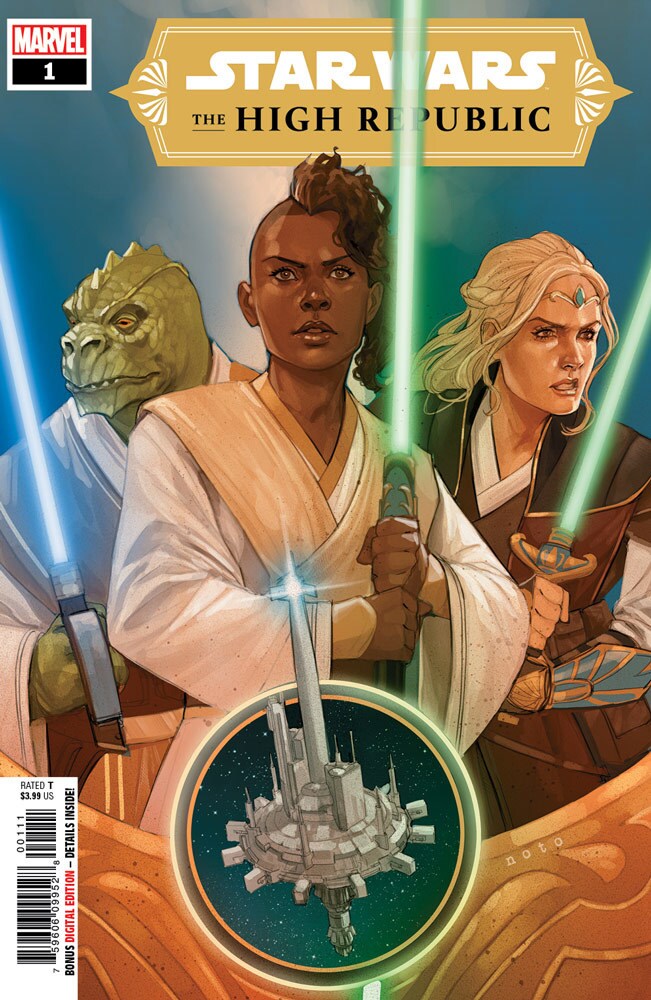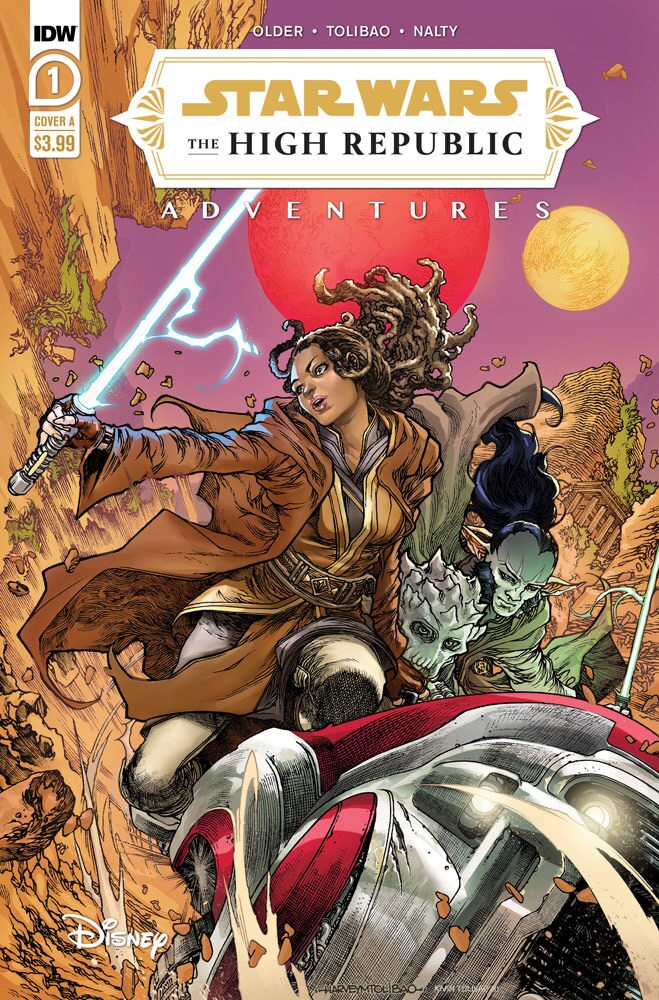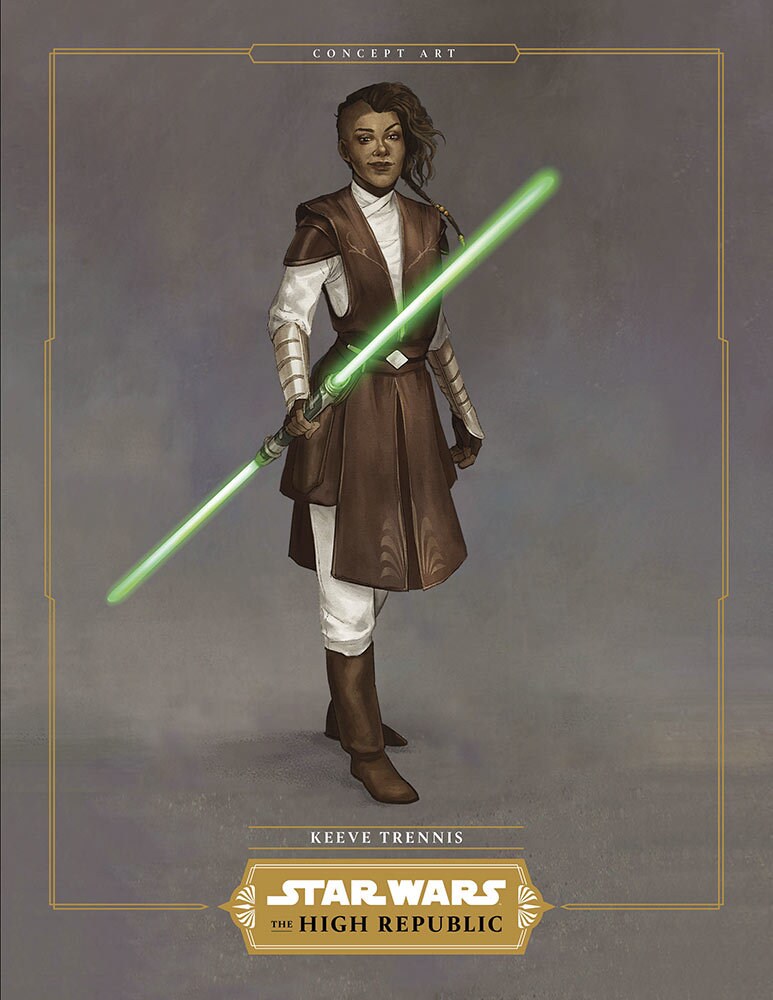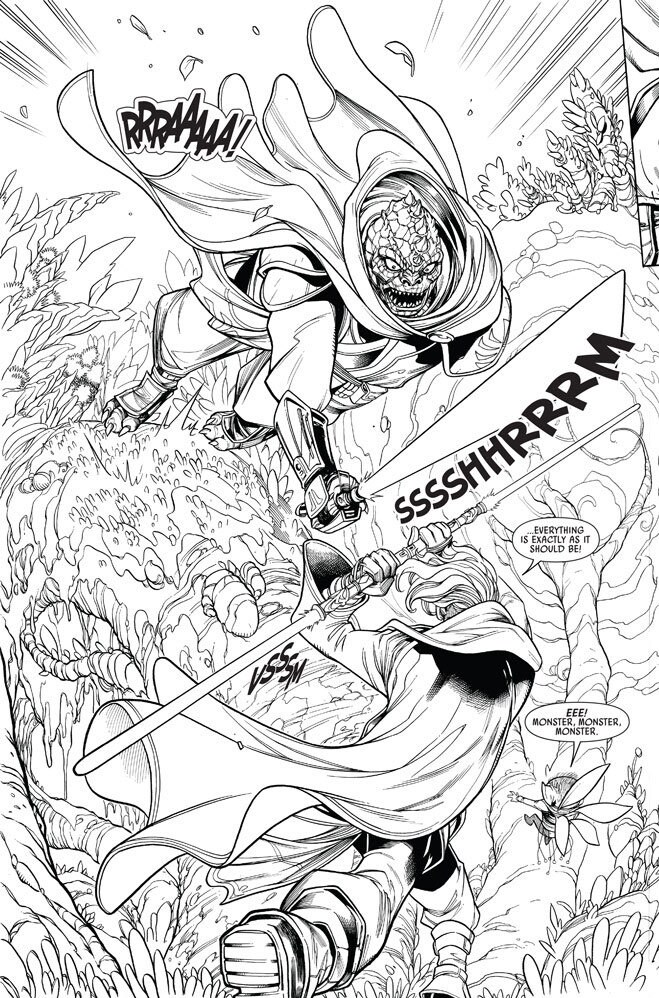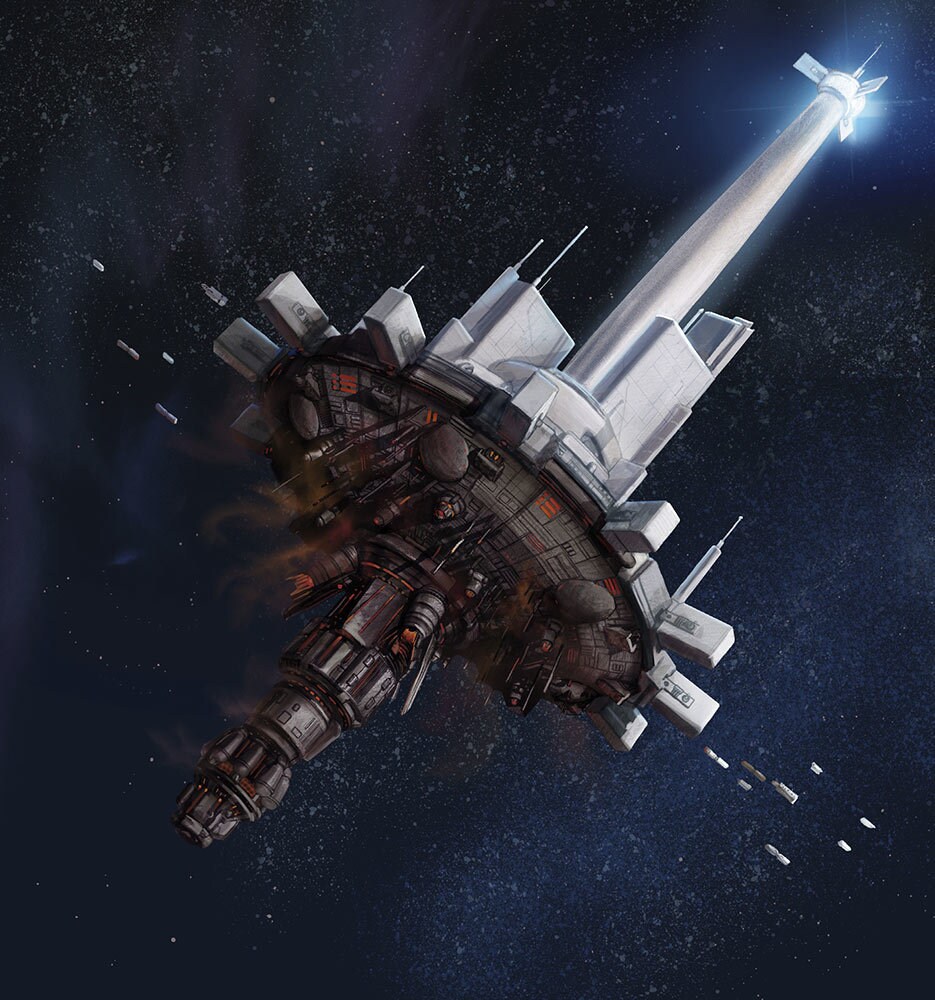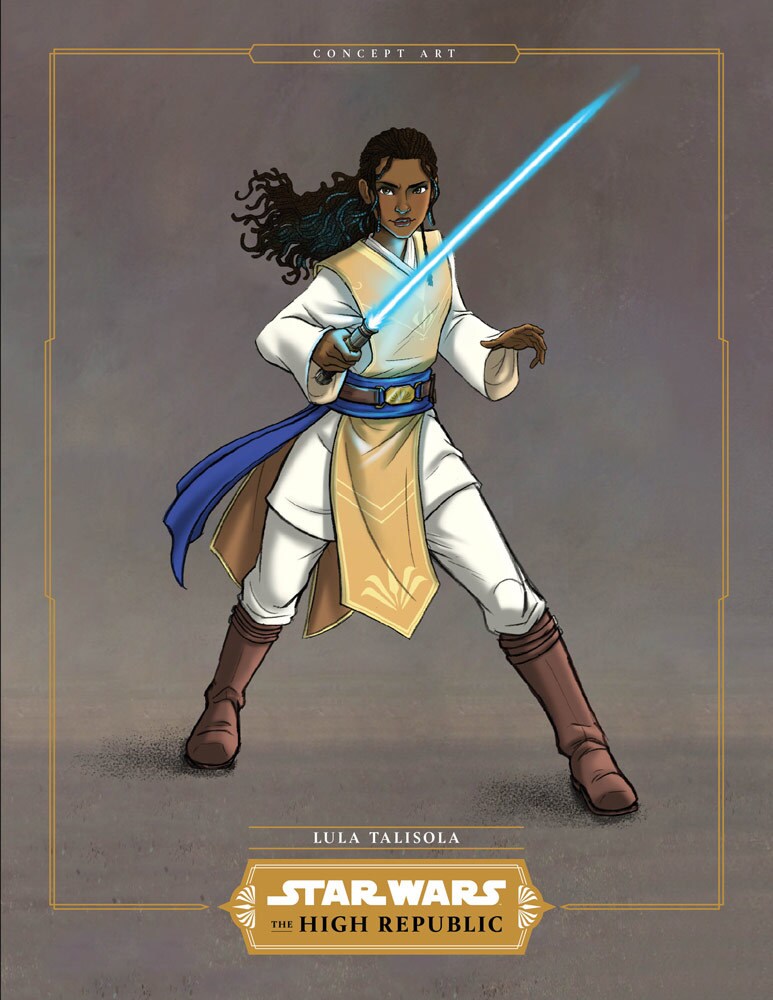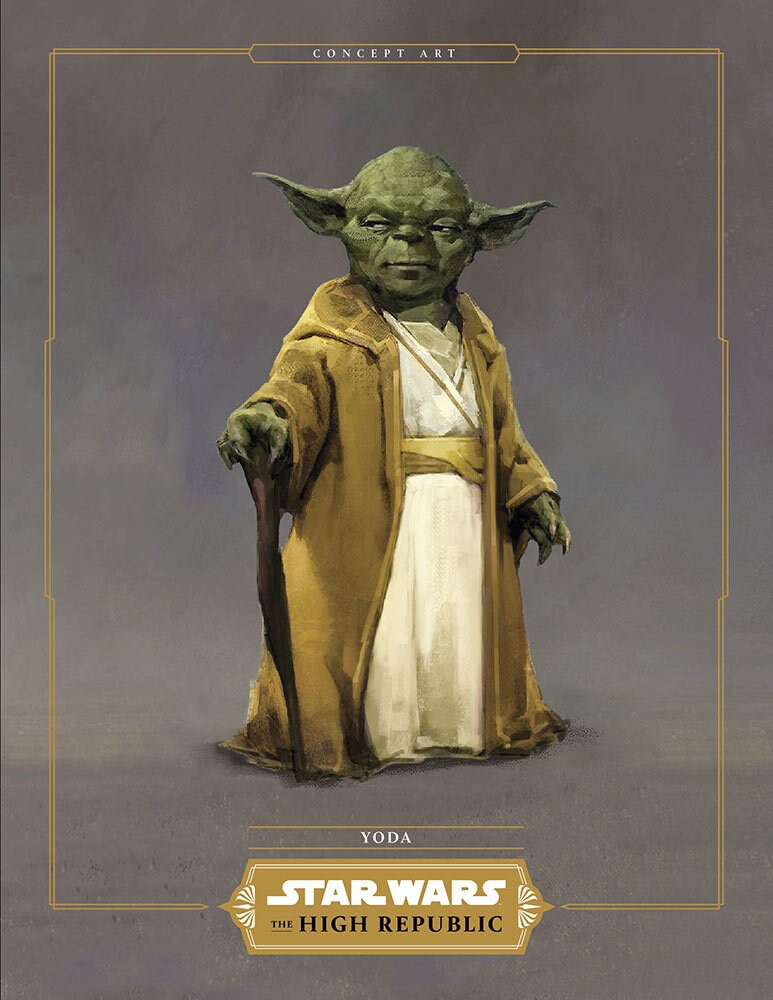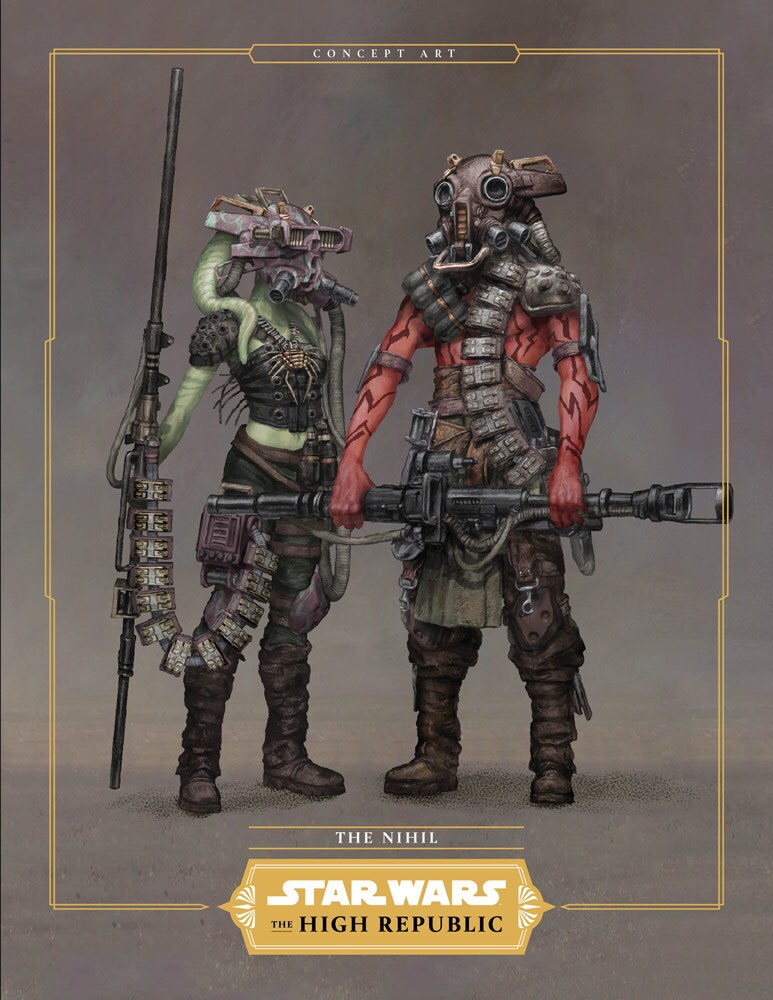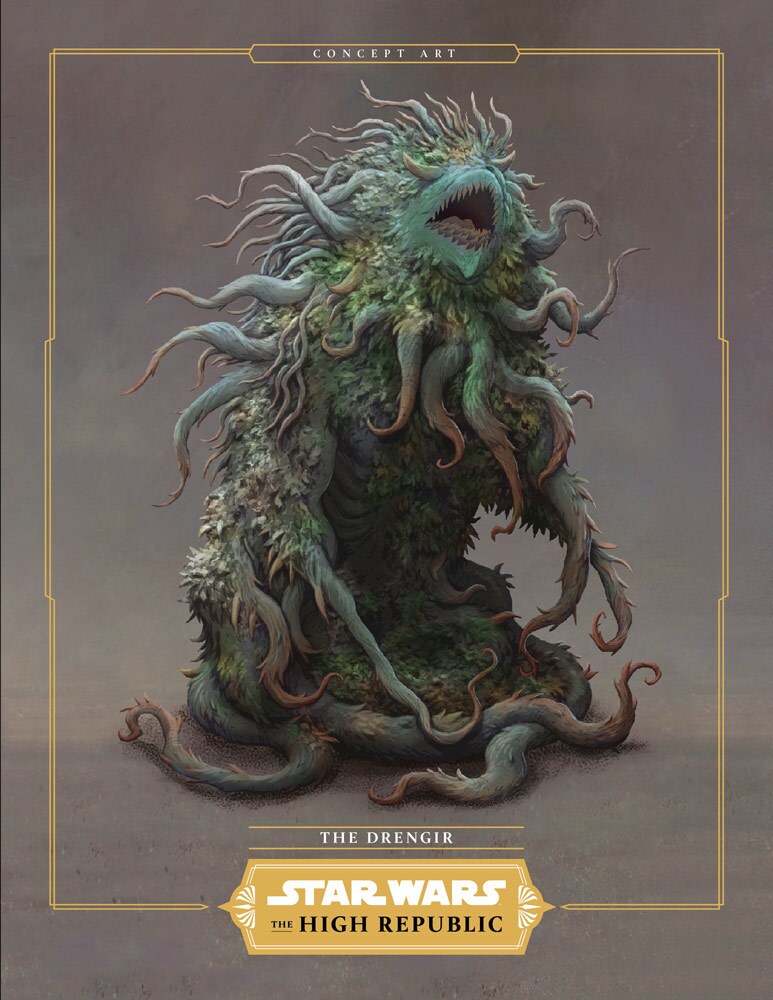What were the Jedi like at the height of the Republic? The writers behind two new The High Republic comic series speak with StarWars.com.
As we prepare to enter a new era of Star Wars storytelling with Star Wars: The High Republic, StarWars.com sits down with the five authors -- Charles Soule, Justina Ireland, Claudia Gray, Daniel José Older, and Cavan Scott -- penning the first round of books and comics. “The Makers of Star Wars: The High Republic” will run weekly through the end of the year to celebrate the January 2021 launch of the storytelling epic.
Spoiler warning: The article contains plot details from The High Republic from Marvel and The High Republic Adventures from IDW Publishing.
Light of the Jedi is just the beginning of an epic tale that sweeps across a prospering Republic in an era of heroes, villains, and monsters. The High Republic, an ongoing comic series from Marvel, picks up where the novel ends. The tale, penned by Cavan Scott and drawn by Ario Anindito, brings together everything you love about Star Wars into a compelling comic book series unlike any other.
"The High Republic is so many different things,” Michael Siglain, creative director at Lucasfilm Publishing, tells StarWars.com. “Cavan has done a beautiful job of making it this really big, high adventure. It is absolutely space fantasy, it’s absolutely horror, it’s absolutely a mystery, it’s absolutely a very personal story. I think he has pulled together so many other elements into it to make it this really big, epic, well-rounded, authentic Star Wars story. To me, that’s one of the beauties of it."
The High Republic Adventures from IDW Publishing shifts the focus to a group of Padawans under the guidance of Master Yoda. Writer Daniel José Older and artist Harvey Tolibao introduce us to the inexperienced Jedi as they race to stop a dangerous attack on the planet Trymant IV.
“Daniel's been brilliant at weaving together numerous characters and storylines into one truly epic adventure that works on multiple levels, for multiple age ranges,” Siglain says. “Seeing the era of the High Republic through the eyes of this team of Padawans -- a team taught by Master Yoda himself -- is thrilling, and gives us a perspective that we really don't have anywhere else. This series is an incredibly fun read...and vital to the larger story in ways that might not be immediately apparent.”
StarWars.com chatted with Cavan Scott and Daniel José Older to learn more about the comic books and the Jedi we’ll meet in their pages, storytelling in this era of Star Wars, and much more.
StarWars.com: What is Marvel’s The High Republic about?
Cavan Scott: The High Republic tells the story of this group of Jedi working together. We’ve seen in the past a lot of master and apprentice stories; what we’ve never really seen in any great detail over the last few years is a group of Jedi. It’s seen through the eyes of Keeve Trennis.
In the comic we see the aftermath of the Great Disaster and what that’s meant to the galaxy. The galaxy, up to this point, has been a peaceful place, and now suddenly there’s a slight tremor of fear because people had their lives disrupted. (Which, this year, we can all understand.) And so the Jedi have a different role, in that they’re suddenly having to keep people safe but also keep them calm, and react to a threat that they didn’t even know was coming.
Through the comic, especially the first arc, we will see the Jedi finding ships that are drifting derelict in space that were just a few hours ago not derelict at all. They’ll see enemies that they thought were opposed to the Republic suddenly in danger from elements within the Republic. They’ll have to cope with all of these things.
And they’ll see real people trying to build new lives out on the frontier and try to work out how to help these people, who will be an inspiration to them.
StarWars.com: Can you tell me more about Keeve?
Cavan Scott: Keeve is a very promising young Padawan who becomes knighted. She’s a Padawan who never really expected to find herself in such a central position at Starlight Beacon. She thought she would be knighted and sent off somewhere to an outpost and yet has found herself right in the heart of everything with people that, to her, are heroes.
She’s the kind of person who does worry about living up to the expectations that she herself gives more than anyone else. The galaxy as a whole expects a lot from the Jedi. She knows this, so she puts loads of pressure on herself to live up to those challenges. She worries about things a lot.
I think we’re seeing in Keeve a more human side to a Jedi. She’s someone who doesn’t always say the right thing. One thing we did in the comic, which we don’t do a lot in Star Wars comics, is that we have Keeve’s internal dialogue. You get to see what she’s thinking at the exact moment the words are spilling out of her mouth.
StarWars.com: In the first issue we see her training with her master, Sskeer. Do they have the Padawan-Master relationship that we’re used to seeing in Star Wars?
Cavan Scott: The thing about masters and Padawans, they work with each other so long, they are the nearest Jedi get to family. With Sskeer, it becomes obvious in the first few issues that something is going on with him. Something that Keeve doesn’t understand.
We’ve never really seen the relationship of a Padawan becoming a Knight, and then having to operate alongside her master as a peer. Once they’ve gotten to that point, that’s who they are, they’re equals. There’s a lot to explore there. We’ve got this younger Jedi, who’s very much finding her feet, this older Jedi who everyone respects. He’s a bit gruff and people know what he’s like, but he’s acting slightly out of odds. So their relationship becomes very strained, but only because they don’t really know how to act with each other.
StarWars.com: And we’ve never seen a Trandoshan Jedi before! Are you a big Bossk fan?
Cavan Scott: [Laughs] I do love Trandoshans. I’m not a big fan of monocultures in Star Wars. I don’t like the idea that all Trandoshans are bad or all Hutts are bad. One of the things I wanted to do right from the off was play with those expectations and have Jedi from other races.
The initial idea for Sskeer came from Phil Noto, the wonderful comic artist who did some amazing concept art before we’d really started putting characters together. One of those was a Trandoshan Jedi. I wanted to know who that was. As the rest of the team will tell you, I nearly went down the entire line trying to work out who they were on that initial bit of art. Sskeer was one of the first people to come out of it. It’s the kind of thing you don’t expect, and I always think that’s the best thing to play with.
StarWars.com: He caught my eye, too. You mentioned Starlight Beacon earlier. What can you tell us about it?
Cavan Scott: Starlight Beacon is immense in every sense of the word. It’s huge. One of the original ideas for Starlight Beacon was that we were talking about a mobile temple at one point, a temple out in space. As the concept of The High Republic developed, we wanted to make sure it was a place that, yes, it was Jedi, but it was also very Republic as well. The idea that these are two great organizations in the galaxy working hand in hand, with one not being under the other. One’s not subservient to the other. They are partners.
On Starlight Beacon you have a mass of Republic staff, whether that’s medical, scientific, or support, and then you have this huge Jedi Temple that’s the central spire of the station. While the comic focuses mainly on the Jedi of the station, we do see in the background some of the Republic teams, as well. Elsewhere in the initiative you’re going to meet those people in different stories. You’re going to see how it all links together.
StarWars.com: Daniel, what is The High Republic Adventures about?
Daniel José Older: What was supposed to be an educational study abroad-type voyage for a group of Padawans and Yoda becomes suddenly much more serious when they end up face to face with the Nihil, a new, ruthless threat to the Republic. Lula Talisola and her friends Qort and Farzala must step into their own as young Jedi amidst treachery and danger, and they soon team up with Zeen, Force-sensitive girl from Trymant IV whose destiny seems somehow tied to theirs.
StarWars.com: What can you tell us about Lula?
Daniel José Older: A born leader, Lula is kind-hearted and also determined to be the best Jedi ever. She's at the top of her classes and amazing with a lightsaber, but the real challenges of battle feel like a whole other world.
StarWars.com: Zeen and her friend Krix are the other characters we meet right away. Who are they?
Daniel José Older: Zeen and Krix are best friends who grew up traveling planet to planet with a small group that's doesn't believe living beings should use the Force. This group doesn’t trust the Jedi, and they would rather be left alone entirely. Zeen also has a pet named Cham-Cham, and a secret.
StarWars.com: Lula gives us a front row seat to see Master Yoda at the height of his youth and power. What was it like writing him in this book?
Daniel José Older: It's definitely been one of the most thrilling things I've gotten to do as a Star Wars writer. Yoda is iconic, of course, and it's so much fun to get to explore what he was like in his younger(ish) years, roaming more freely around the galaxy and hanging out with the Padawans.
StarWars.com: The High Republic is an unusual project with a huge amount of collaboration. Did anything surprise you about working with the other authors so closely?
Daniel José Older: It's just been so much fun, honestly. Instead of having to consult a book or forum somewhere, when we have an in-world continuity question, we pop up in the [chat] and see what's what. And if no one has an answer, we toss it back and forth a few times till we get one. It's a thrilling way to work on a gigantic storytelling adventure.
Cavan Scott: It’s very interesting to work with a bunch of storytellers from a prose or writing point of view. Obviously, you all come with your own angles about what makes a story, how it works, and I think that’s been a big a part of this as anything. When one writes on a comic, one writes on a team book in effect, so it really makes you think about what it is to have a group of people come together -- people with a lot of stories behind them -- then seeing how those people react to each other, how they interact, and how they develop.
That’s the biggest thing really. You learn from each other so much. We all have different backgrounds. Some of us have been writers for many, many years, some have other experience and have become writers relatively more recently. We’re all bringing different things to it. I think that’s the biggest thing I’ve taken away from it, learning from these other wonderful people about how they work, how they think, and how they ask questions about stories, which are different questions than perhaps I would ask. It makes you think in different ways.
StarWars.com: Was there anything in particular that intrigued you when writing about a previously unknown era of Star Wars?
Cavan Scott: I think it’s fascinating what the Jedi would be like in a time of peace. It’s a different kind of peace than we see in the prequels. This is a time where there’s expansion, where the Jedi aren’t all holed up on Coruscant. They’re not all in their ivory tower of the Jedi Temple. They’re out there with the people.
That’s what I’ve always been fascinated by. What would the Jedi be if the Jedi just lived alongside everyone else? What would their temples be like on other planets? How would they be involved in the local culture? How would their culture change depending on who they’re with? I think that’s been a fascinating thing to think about.
There was a note we got very early on from Pablo Hidalgo in the Story Group that these are the Jedi who notice the small people. These are the Jedi who know what it’s like to be out there on the frontier. That’s been really important to me.
Daniel José Older: It really is the thrill of getting to tell stories about Jedi who aren't doomed, who aren't in the midst of this tragic fall. I think the concept hits home for a lot of reasons right now -- it's a time when it's especially important to imagine what it looks like when the institutions that are supposed to protect and uplift us actually do.
Another way to look at it is: How can we learn from the mistakes of the future? What went wrong and what does that say about what can go right? Of course, there's conflict and exciting battles, but it's also a chance to turn our vision toward a healthy, positive version of something we've seen so tarnished and messy.
StarWars.com: Who are the villains the Jedi will be facing?
Daniel José Older: The Nihil are a terrifying group of Viking-like raiders that have been wreaking havoc on the galaxy. What's really exciting about this IDW run is we get to go deep within the upper ranks of their leadership and see how things work, the power plays and complexities. As is often the case, what appears chaotic and nihilistic outwardly can often conceal much more devious power plays within.
Cavan Scott: There is another villain lurking, literally, beneath the surface. That’s the Drengir. Now, the Drengir are a species that are introduced elsewhere in the initiative. The Jedi aren’t really aware of how widespread this danger is. They are a species of sentient plant-life who have a particular affinity for the dark side and have a particular taste for what they call meat -- as in, the rest of the universe.
StarWars.com: Eww!
Cavan Scott: It’s very interesting because you would think that faced with a lightsaber, a plant wouldn’t last long, but these plants have a few tricks up their tentacles. They’re not all that they seem.
The book ended up being a little bit darker than I thought it would, mainly because of our wonderful artist Ario Anindito, who is incredible. Ario and I share a very deep love of horror, and so while we’re keeping the high adventure to the forefront, this does turn into a little bit of a monster book. For me, I grew up with Star Wars as a monster series. To be fair, I read Marvel’s Star Wars before I ever saw any of the films. For me, the aliens and the monsters were where it was at.
So between us we’re leaning into the horror side of things, which is a wonderful surprise for me. I didn’t really think we’d be going that way, but it’s a good example of how a comic isn’t just a writer. The comic is the artist. Ario’s pencils are incredible. The detail is just exquisite. The acting on his character’s faces -- when Keeve feels, you feel it with her, because the look in her eyes is intense. The combination of Ario and Mark [Morales] on inks are just genius. We’ve got an amazing team here on this book. I can’t wait for people to see it.
One of the things I love in this book is that we have a character in Keeve who is constantly picking up waifs and strays. She doesn’t like having them around, but they just seem to follow her because they’re drawn to her. It’s because she is so human with them. She is so caring to them. She opens up to them. She keeps them safe, they feel safe with her. They want to go on adventures with her.
That was very important for me. When you go back to the original Star Wars trilogy, you want to go on adventures with those people. There’s squabbling and there’s bickering, but it’s the kind of squabble and bickering you want to be a part of. It’s the best gang in the universe to be with.
That’s what we’ve been trying to do with this book as well. There is a sense of comradery, there’s a sense of banter. But most importantly, these are heroes that you will want to be with and you will really care about, because they care about you.
Marvel’s Star Wars: The High Republic #1 arrives January 6, 2021, and is available for pre-order now on Comixology and at your local comic book store.
IDW Publishing’s Star Wars: The High Republic Adventures #1 arrives February 2021, and is available for pre-order now on Comixology and at your local comic book store.
Visit Lucasfilm’s official hub for all things Star Wars: The High Republic at StarWars.com/TheHighRepublic.


